Thiago M. Coutinho
Creating and Reenacting Controllable 3D Humans with Differentiable Rendering
Oct 22, 2021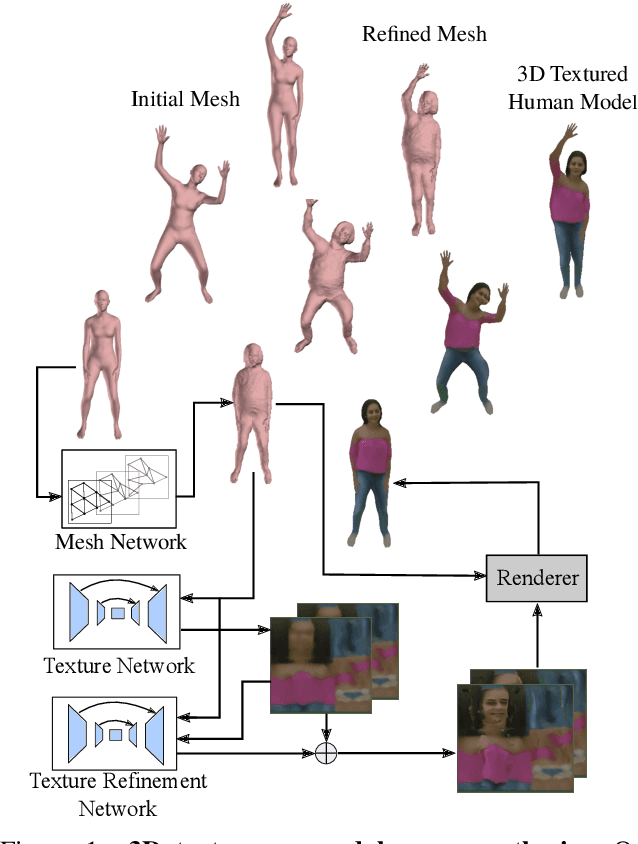

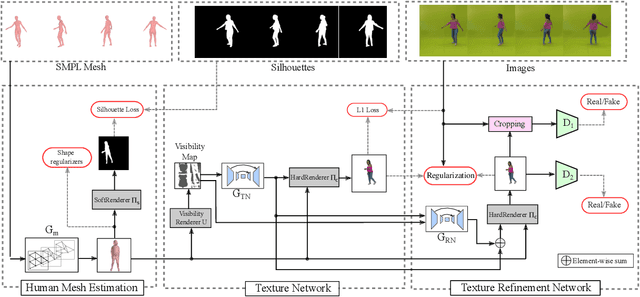
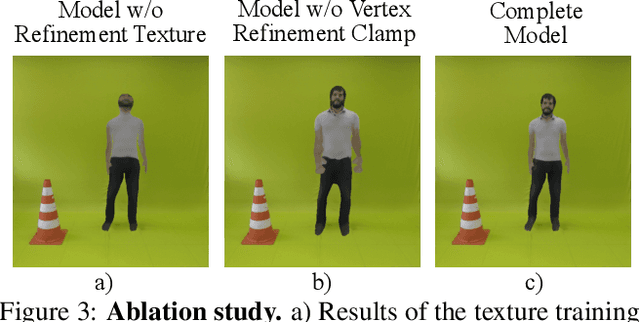
Abstract:This paper proposes a new end-to-end neural rendering architecture to transfer appearance and reenact human actors. Our method leverages a carefully designed graph convolutional network (GCN) to model the human body manifold structure, jointly with differentiable rendering, to synthesize new videos of people in different contexts from where they were initially recorded. Unlike recent appearance transferring methods, our approach can reconstruct a fully controllable 3D texture-mapped model of a person, while taking into account the manifold structure from body shape and texture appearance in the view synthesis. Specifically, our approach models mesh deformations with a three-stage GCN trained in a self-supervised manner on rendered silhouettes of the human body. It also infers texture appearance with a convolutional network in the texture domain, which is trained in an adversarial regime to reconstruct human texture from rendered images of actors in different poses. Experiments on different videos show that our method successfully infers specific body deformations and avoid creating texture artifacts while achieving the best values for appearance in terms of Structural Similarity (SSIM), Learned Perceptual Image Patch Similarity (LPIPS), Mean Squared Error (MSE), and Fr\'echet Video Distance (FVD). By taking advantages of both differentiable rendering and the 3D parametric model, our method is fully controllable, which allows controlling the human synthesis from both pose and rendering parameters. The source code is available at https://www.verlab.dcc.ufmg.br/retargeting-motion/wacv2022.
Learning to dance: A graph convolutional adversarial network to generate realistic dance motions from audio
Nov 30, 2020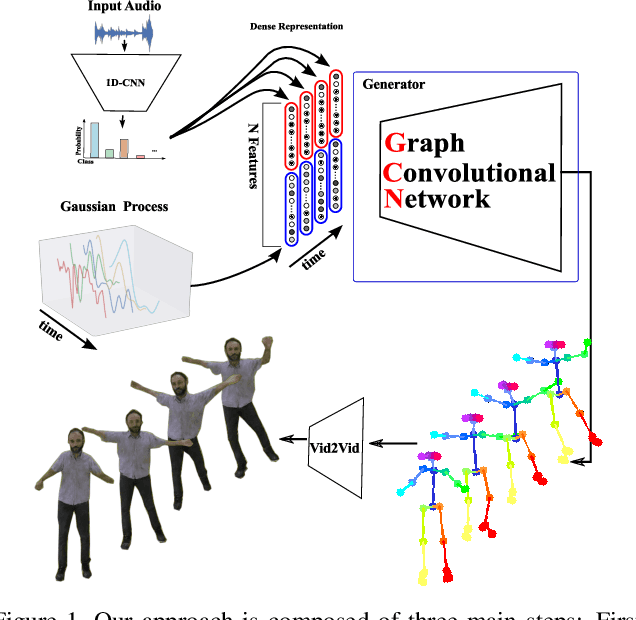

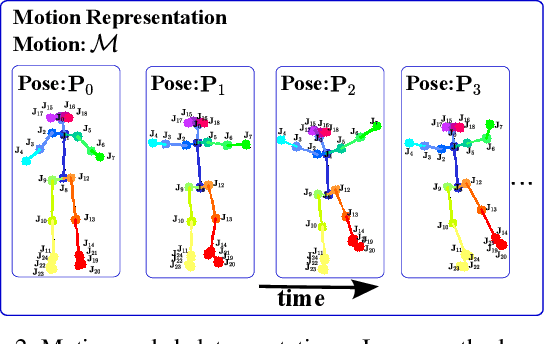
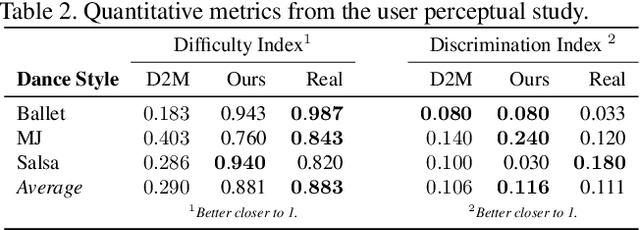
Abstract:Synthesizing human motion through learning techniques is becoming an increasingly popular approach to alleviating the requirement of new data capture to produce animations. Learning to move naturally from music, i.e., to dance, is one of the more complex motions humans often perform effortlessly. Each dance movement is unique, yet such movements maintain the core characteristics of the dance style. Most approaches addressing this problem with classical convolutional and recursive neural models undergo training and variability issues due to the non-Euclidean geometry of the motion manifold structure.In this paper, we design a novel method based on graph convolutional networks to tackle the problem of automatic dance generation from audio information. Our method uses an adversarial learning scheme conditioned on the input music audios to create natural motions preserving the key movements of different music styles. We evaluate our method with three quantitative metrics of generative methods and a user study. The results suggest that the proposed GCN model outperforms the state-of-the-art dance generation method conditioned on music in different experiments. Moreover, our graph-convolutional approach is simpler, easier to be trained, and capable of generating more realistic motion styles regarding qualitative and different quantitative metrics. It also presented a visual movement perceptual quality comparable to real motion data.
 Add to Chrome
Add to Chrome Add to Firefox
Add to Firefox Add to Edge
Add to Edge